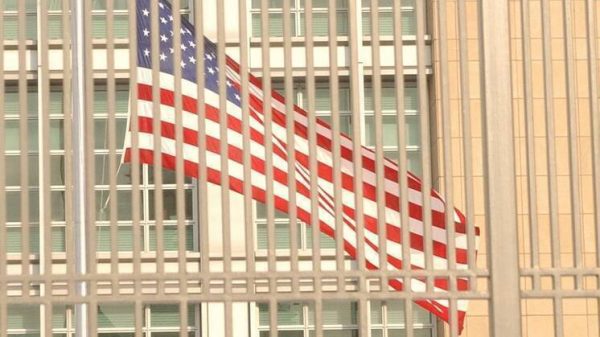
The Oxford AstraZeneca vaccine came as welcome news but now the focus turns to its distribution
Credit: John Cairns/AFP
Matt Hancock had good news and bad news. On Wednesday, he announced Britain had approved its second Covid-19 vaccine — one which he said offered a “route out of the pandemic”. After all, Oxford and AstraZeneca’s jab was much cheaper and easier to distribute than the earlier-approved Pfizer vaccine. If all went to plan, things could even return to normal by spring.
Yet hours later, the Health Secretary struck a more sombre note. Millions more Britons were being placed under tougher Covid-19 restrictions, New Year’s Eve celebrations across the majority of the country cancelled. For millions it only underlined the need to get the vaccines into arms as soon as possible.
Work has been underway for months to put in place a supply chain so that GPs can begin mass inoculations this week. From Monday, the vaccines will start being given to priority groups such as care home residents and staff and those over 80 years old.
It is moment that those involved with the Oxford-AstraZeneca trial have been poised for since publishing their efficacy data in late November. The wait has proved costly as Covid cases have spiralled out of control.
“It’s going to be really close [on whether we can get ahead of it],” says Sir John Bell, who sits on the UK’s vaccine taskforce. “I’m worried about the case numbers, they’re really shooting up every day.”
When the data from the trial was published, there were 15,000 daily reported Covid cases in Britain. By Wednesday, there were more than 50,000. “The new strain is very infectious, and there’s a South African strain that, I think, is even more infectious,” Sir John says.
Estimated number of people testing positive for covid-19 in england has continued to increase
“We just have to skate really fast to see if we can stay ahead of it. The most important thing is to put a lid on this expansion of the disease and the only real way to do that is going to be with vaccines.”
Alone, this may have proved a tall ask for Pfizer. But, together with AstraZeneca’s vaccine, there may be a real chance.
Even before the London-listed company received data from the trial showing the vaccine worked, doses were being pumped out. Initially, this was in Germany and the Netherlands, where production capacity was able to get up to pace much quicker.
Now, a supply chain has also been set up across the UK, a mesh of organisations which sees AstraZeneca preparing small groups of cells to then be sent out to grow at manufacturing partners including Oxford Biomedica, and later sent on to warehouses to be finished by combining with other liquids. In the UK, this final stage is being done by an Indian company called Wockhardt at its North Wales plant for £50m.
Things could have been smoother. Britain’s national vaccine manufacturing facility, for example, was fast-tracked last year, but is still not expected to come online until the middle of 2021. In the meantime, Oxford Biomedica helped establish a “virtual vaccine manufacturing and innovation centre”, the equipment from the planned Harwell, Oxford site being instead deployed at Biomedica’s OxBox facilities.
The output appears, at first glance, disappointing. According to soures, around a million doses will be available from tomorrow, out of a total UK order of 100 million doses — significantly below the 30 million doses AstraZeneca had in spring said it would have ready for use in the UK by September. A major hold-up is the stringent safety checks on the doses demanded by the regulator the MHRA. An estimated four million doses of the vaccine are ready for deployment and a further 15 million are waiting to be put in vials, but are being delayed by the review.
Still, the doses which are ready to go will be spread further. The Government last week changed tack and decided against holding back second doses for those receiving first doses.
It was a decision that Sir John says took much deliberation. With the Government fielding advice from consultants such as PA Consulting, Boston Consulting Group, Deloitte, and Baringa Partners, it ultimately decided such a route was needed to bring down the surging Covid-19 cases — in turn setting a ticking clock for those receiving first doses to then receive the next within 12 weeks.
“This idea of three months [between doses] is because the trial got data at three months, but that is not to say that it won’t work after four months, if you had to do that [and have a larger gap between doses],” Sir John says.
AstraZeneca appears confident it will not need that extra time. Boss Pascal Soriot last week tabled ambitions to get to “one million a week and beyond that very rapidly”.
“We can go to two million. In January we will already possibly be vaccinating several million people and by the end of the first quarter we are going to be in the tens of millions.”
Rolling out the Oxford vaccine as well as the Pfizer vaccine means Britain should be able to “do two million vaccinations a week”, says Sir John, although in his view, “to be honest, it needs to be more than that”.
Oxford vaccine timeline vs population (cumulative)
“At two million a week, that only gets us to eight million by the end of the month, and that doesn’t seem to be the right number to me. They’ve got to push really hard in January.”
Companies can push as hard as they like, but a logjam in the supply chain is not the only thing that stands in the way of a huge uptick in vaccine distribution across the UK. Concerns are also rife about how to get those vaccines to people.
Last week, GPs issued a warning that a “larger workforce” was needed to help facilitate an immunisation drive after it emerged that a proposed volunteer army, including military personnel, firefighters and airline staff, had not yet materialised.
Among healthcare professionals, some issues have already become apparent whilst distributing the Pfizer vaccine, namely knowing when it will be delivered. Some are, however, hopeful that with the Astra vaccine, the system of matching vaccines to people will be slightly less arduous given it does not need to be stored at such low temperatures and so can go directly to more locations.
“It could be much more straight-forward,” says Azeem Majeed, a professor of Primary Care at Imperial College, London. Rather than being managed by clusters of GP surgeries, known as primary care networks, the “Government could switch to a system delivered to GPs directly and then be added to a patient’s record”.
Further support could come from the private sector. Last week, Tesco offered up its network of warehouses and refrigerated lorries to help get the vaccine to immunisation sites, whilst streams of hotels and conference centres have also been put forward as potential locations. Whether these offers will be accepted remains to be seen.
In fact, those close to the process are keen to stress this is an issue they are not too concerned about. “GPs do a pretty good job on the flu vaccine every year,” says Sir John. “They get something like 30 million doses of flu vaccine out the door in October, November and early December. And there, they weren’t doing anything special, they were just doing what they always do.”
In his view, this is a hurdle that can easily be overcome. After all, this week saw researchers take a “very big step down the road of universal immunisation against the disease”. “I’d say we’re in a good place — a really good place.”
Additional reporting by Matthew Field






















































Свежие комментарии